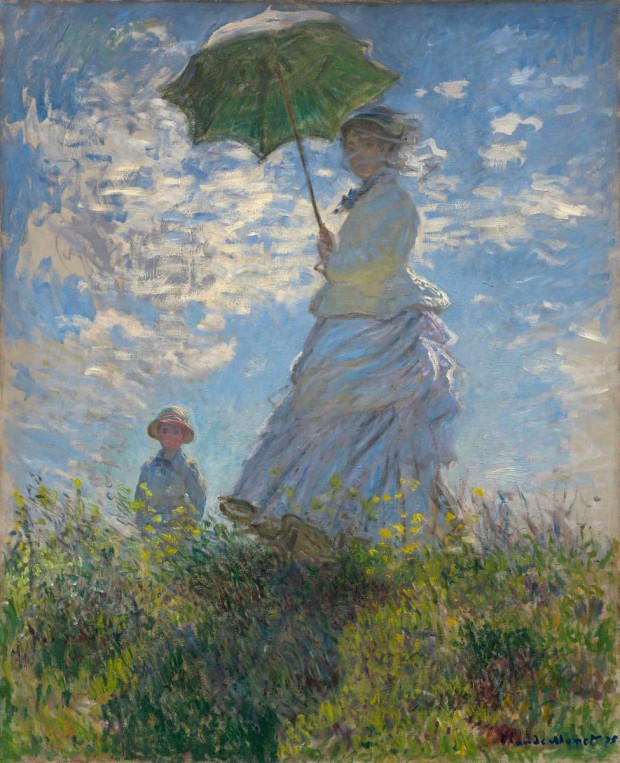An iconographic and text archive related to communication, technology and art.
In a violently poetic text, Lawrence describes what produces poetry: people are constantly putting up an umbrella that shelters them on the underside of which they draw a firmament and write their conventions and opinions. But poets, artists, make a slit in the umbrella, they tear open the firmament itself, to let in a bit of free and windy chaos and to frame in a sudden light a vision that appears through the rent –Wordsworth’s spring or Cézanne’s apple, the silhouettes of Macbeth or Ahab. Then come the crowd of imitators who repair the umbrella with something resembling the vision, and the crowd of commentators who patch over the rent with opinions: communication. Other artists are always needed to make other slits, to carry out necessary and perhaps ever-greater destructions, thereby restoring to their predecessors the incommunicable novelty that we could no longer see. This is to say that artists struggle less against chaos (that, in a certain manner, all their wishes summon forth) than against the “clichés” of opinion. The painter does not paint on an empty canvas, and neither does the writer write on a blank page; but the page or canvas is already so covered with preexisting, preestablished clichés that it is first necessary to erase, to clean, to flatten, even to shred, so as to let in a breath of air from the chaos that brings us the vision.
☛ What Is Philosophy by Gilles Deleuze and Félix Guattari, tr. by Hugh Tomlinson and Graham Burchell, New York: Columbia University Press, [1991] 1994, pp. 203-204.
The text by D.H. Lawrence Deleuze and Guattari are refering to is the introduction he wrote for Harry Crosby’s Chariot of the Sun, first published in 1928. It’s available online and is really worth reading.
• • •
Gaston Bachelard wrote something strikingly similar in his book on The Formation of the Scientific Mind
When we contemplate reality, what we think we know very well casts its shadow over what we ought to know. Even when it first approaches scientific knowledge, the mind is never young. It is very old, in fact, as old as its prejudices. When we enter the realms of science, we grow younger in mind and spirit and we submit to a sudden mutation that must contradict the past. (tr. by Mary McAllester Jones, Manchester: Clinamen Press, [1938] 2002, pp. 24-25)
Like painting, write Deleuze and Guattari, philosophy is a never-ending task: “And what would thinking be if it did not constantly confront chaos?” (1994: 208). If a given theory is not to be reduced to a stratified cliché, the thinker must relentlessly put its relevance at play, and risk losing it. Thinking, from this perspective, is immediately a practice: it is a continuous engagement towards always ever-changing living experiences, a true “pensée engagée” as Denis de Rougemont once called it (previously).
Deleuze and Guattari’s observations also allows to conceive of another kind of critique: one that does not operate as a mere comment. There are at least two ways of thinking of such a critique. One familiar way lies in a critique that would be a work of art in itself: a new slit in the umbrella. Another, perhaps lesser-known way is offered by Giorgio Agamben in the introduction to his book Stanzas. There, following the steps of the Jena group, Agamben argues for a critique that includes “its own negation”, “whose essential content consist[s] in precisely what it [does] not contain.” (tr. by Ronald L. Martinez, Minneapolis, University of Minnesota Press, [1977] 1993, xv). This critique does not represent its object through a comment. Instead, it is like the opening of a window on what cannot be grasped, but only experienced in passing. As long as the work of art is understood as such an opening, I believe those two ways are not totally irreconcilable.
A similar operation can be applied to the concept of communication. In the excerpt from What Is Philosophy quoted above, Deleuze and Guattari identify the process of patching the slit opened up by the poet to communication: communication is the endless circulation of “preestablished clichés”. This is a very specific understanding of communication, but also one that is widely shared. According to this understanding, communication is the process by which something is shared in common: a meaning for example (I would add that this understanding of communication is a good example of just such a preestablished cliché). However, it is possible to think of another kind of communication where the emphasis does not lie beyond the process of communication, but in communicability itself.
Lawrence’s poet opens a window on that which is incommensurable: it has no order, it is unrecognizable, and it cannot be represented as such. Either it is made present, but ungraspable, through this opening, or it is represented in the dull order of preestablished measurements by the “crowd of commentators”. Yet, and even though it is uncommunicable, the opening is nonetheless an experience: that of communicability itself. At this very window, which needs to be constantly reopened, poetry and philosophy meets in the form of a self-negating critique.
• • •
Related topics:
- “Theories are only made to die in the war of time”, Guy Debord, 1978
- Maurice Blanchot on critique
- Epistemology as a form of melancholy
- Different views about the relation between actions and ideas
• • •

- By Philippe Theophanidis
- on
- ― Published in Art, Communication
- Tagged: Agamben, chaos, communicability, D.H. Lawrence, Deleuze, incommensurability, incommunicability, language, poetry
